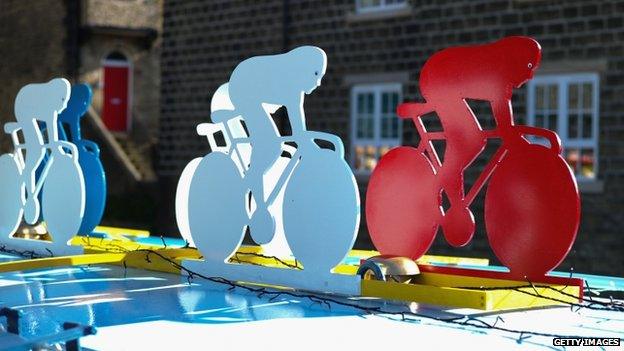Tour de France Grand Depart diary
- Published
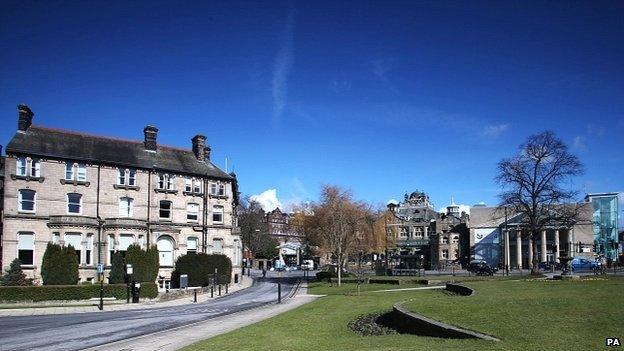
Organisers are praying the Tour will be blessed with blue skies like these over Harrogate town centre
With the world's biggest bike race starting in Leeds on 5 July, BBC Yorkshire's Tour de France correspondent Matt Slater, external rounds up the best of the gossip, opinion and stories, on and off the bike, and also tries to explain some of cycling's unique lingo.
TOP STORIES
Welcome to Yorkshire impresario Gary Verity, the man whose idea it was to even try to bring Le Tour to Yorkshire, says his biggest worry with the race six weeks away is the weather. "For the aerial shots that go around the world, I'd clearly have a preference for them to be under a backdrop of lashings of sunshine and beautiful blue skies - but I can't do anything about that," said Verity. Very true, Gary, which is why if I were you I would worry more about the 120-mile bike ride you have committed to do on 1 June.
Full story: The Daily Express, external
Barry Hoban won eight stages at Le Tour between 1967 and 1975, in a career that spanned three generations of Tour legends: Jacques Anquetil, Eddy Merckx and Bernard Hinault. And until Mark Cavendish came along, no British rider had won more Tour stages than Wakefield's Hoban. So he should probably be better known than he is. But that could change this year, with a new version of his autobiography on the way, and Yorkshire's cycling history very much in vogue. With that in mind, a museum in the town of his birth, Wakefield One, will be exhibiting his 1978 Tour bike from next Tuesday. It will be the centrepiece of a show to celebrate the Tour in Yorkshire. Barry will be delighted.
Full story: Wakefield Express, external
An arts charity in Thirsk, North Yorkshire, is making a model cyclist out of recycled toys to welcome Le Tour's pro cyclists and promote the concept of up-cycling, giving something old a second start on the cycle of life. That's a lot of cycling. The weekly Rural Arts club is calling its model cyclist "Bruce".
Full story: The Northern Echo, external
Pupils at a North Yorkshire school for girls are planning to ride 180 miles through the Dales to raise money for a charity that gives opportunities to children in Russian orphanages. Escrick's Queen Margaret's school has previous in this area, it raised £3,000 with a 210-mile bike ride for The Theo Trust charity in 2012, and now hopes to tap into Tour fever to beat that. They even have a "mascot", a Victorian penny farthing on loan from York's Castle Museum. Do the ride on that and they will deserve knighthoods.
Full story: The Press, external

TWEET OF THE DAY
"Yeeess…@mickrogers wins the stage at @giroditalia. Congrats mate. Enjoy the victory! YOU DESERVE IT!!!"
Michael Rogers' teammate Alberto Contador, external sends his congratulations on the Aussie veteran's superb win at the Giro.

CYCLING ROUND-UP
It's a case of Advance Australia Fair at the moment in world cycling, with Cadel Evans still holding the Giro d'Italia lead that he inherited from compatriot Michael Matthews, and Rogers winning Wednesday's 11th stage. It was a magnificent victory for the veteran Rogers, who won three world time-trial titles between 2003 and 2005, but had never before won a stage at a Grand Tour. He attacked on a downhill section 20km from the finish and held off the pack to win by 10 seconds.
It would not be a round-up of Giro action without mentioning crashes, and Wednesday's took out a number of riders, causing two to abandon the race. Australian team Orica GreenEdge has now lost four of its nine riders, which suggests there is some karma at play in Italy.
Thursday's 12th stage is probably the most important day in this year's race so far, the first individual time trial. It is a bumpy 41.9km from Barbaresco to Barolo in north-east Italy, and Evans will fancy his chances of building a buffer before the last week's mountain stages.
Meanwhile, Burley-in-Wharfedale's Scott Thwaites is in with a decent chance of making his team's Tour line-up, which would probably make him the only Yorkshireman on the grid in Leeds. His NetApp-Endura team, external has included him on a 14-man "long list", from which they will select their final nine.

Australia's Cadel Evans, wearing the pink jersey of the race leader, pedals during the 11th stage of the Giro d'Italia,

A TO Z OF LE TOUR
M is for…
Maillot a pois rouge - The King of the Mountains competition might be 81 years old, but its eye-catching jersey has only been around since 1975. The design of red polka dots on a white background came about because the competition's sponsor, Chocolat Poulain, said so. Its chocolate bars had polka dots on the wrappers. Recent years have seen wearers of this jersey get a bit carried away with the polka-dot theme, putting them on their shoes, shorts, socks and sunglasses.
Maillot blanc - The white jersey is worn by the best-placed rider under 26 years of age. This competition started in the same year the polka dots arrived, 1975. Riders must be under 26 on 1 January of the year following that Tour. Of the 29 winners of this jersey, only six have gone on to win the yellow jersey, too.
Maillot jaune - Ah, the yellow jersey, one of the most iconic items of clothing in sport, but it is not as old as Le Tour. The first winner of the race got a green armband, and there is some confusion as to when the yellow jersey arrived. The official history says 1919, so we will go with that, and I will also opt for the story that it was yellow to match founding newspaper L'Auto's newsprint, and not because it was the only colour a manufacturer could knock up at short notice.
Maillot vert - The green jersey is the prize in the Tour's points competition, which started in 1953. The points-scoring system has been tweaked many times, but the current situation sees points being awarded to the first 15 riders at the end of a stage, and for immediate sprints along the way. So times do not matter, places do; and the green jersey (green for the simple reason that a lawnmower company was the first sponsor) is usually fought out between pure sprinters who scrap for wins in flat stages, and more versatile riders who can pick up points everywhere.
Musette - After all those famous shirts, I thought I would go for a more mundane piece of fabric. Musettes are small canvas bags with big straps, so they can be easily grabbed, and inside them you will find a cyclist's jam sandwiches, although these days it is more likely to be flavoured rice cakes and energy gels.
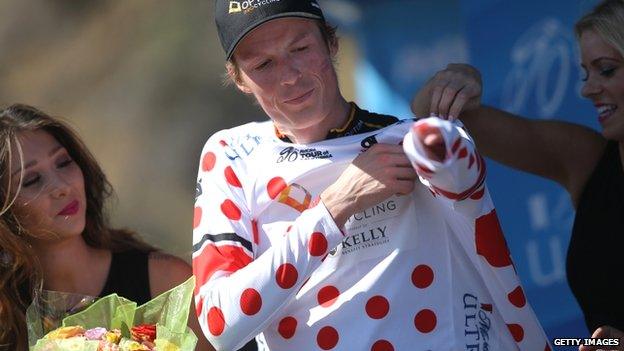
The King of the Mountains competition is 81 years old but its eye-catching jersey has only been around since 1975

TODAY'S TOUR TRIVIA
These jerseys are lovely, of course, and look very nice framed and hung on your wall. They should also never be worn by anybody who has not earned them the hard way. But this being professional sport, there is a cash consideration for winning these competitions. The prize money pot at last year's Tour was more than 2m euros, or £1.6m. Chris Froome got £360,000 for winning the overall race, as well as £20,000 for winning three stages, £12,000 for coming second in the King of the Mountains (KoM) competition and smaller amounts for his other results on stages and in the points competition. But he also earned "rent" for the 13 days he was "in yellow" and the five days he led the KoM competition. This brought in another £5,000. The crucial thing to say about this, though, is that cyclists share their prize money with the entire team: the bottle-washers, chefs, drivers, masseurs, mechanics, everybody. So Froome's £400,000-plus was a nice contribution to the tips pool, and a fitting thank you for a job very well done.
- Published20 May 2014

- Published19 May 2014
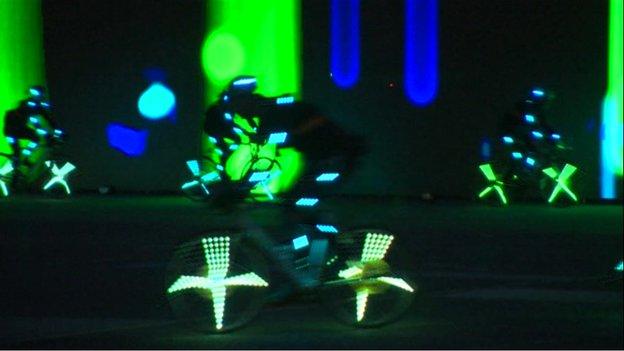
- Published16 May 2014
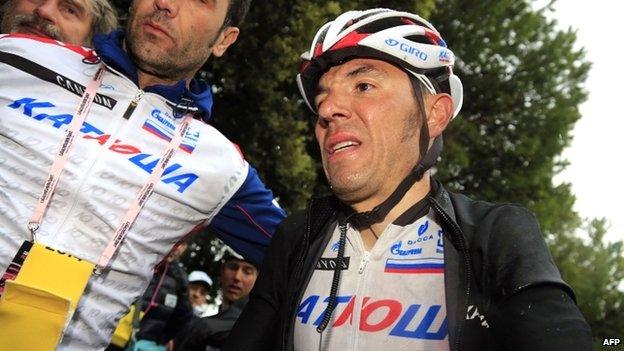
- Published15 May 2014
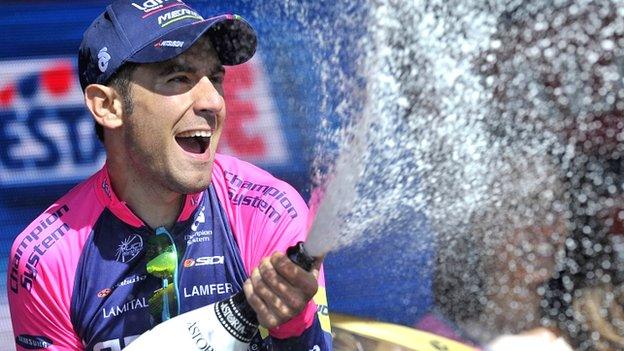
- Published14 May 2014

- Published13 May 2014
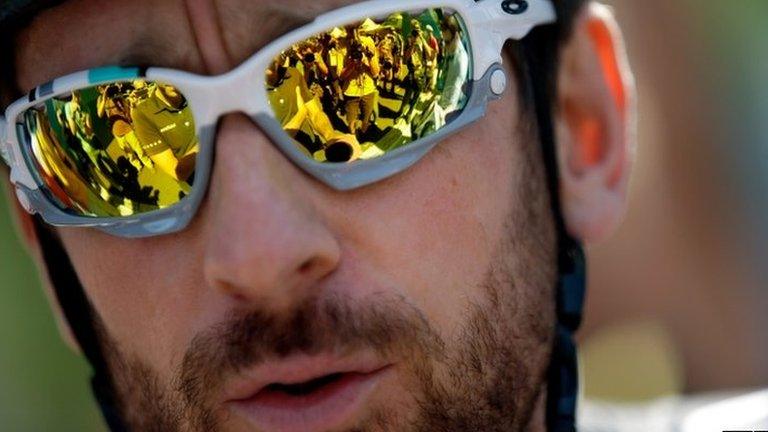
- Published12 May 2014
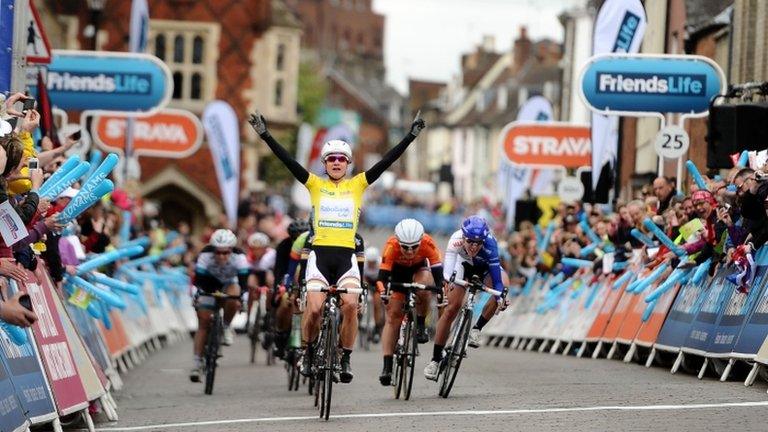
- Published9 May 2014

- Published8 May 2014
- Published7 May 2014
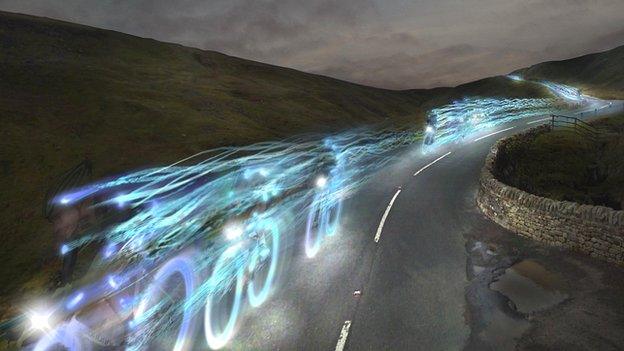
- Published6 May 2014
